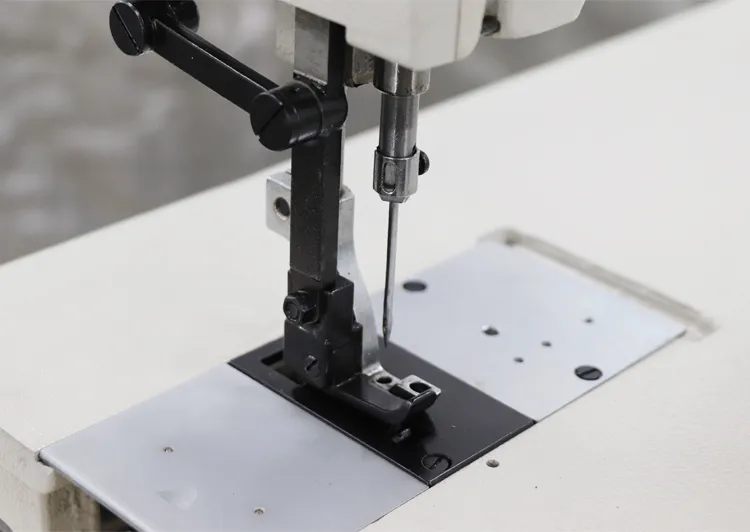faux leather sewing machine
Sewing with Faux Leather A Guide to Achieving Professional Results
Faux leather, often referred to as synthetic leather or pleather, has gained immense popularity in the world of fashion and home decor. Its appeal lies not only in its affordability but also in its versatility and ethical considerations. As more people look to incorporate faux leather into their projects, understanding how to work with this material on a sewing machine becomes essential.
Choosing the Right Sewing Machine
The first step in successfully sewing faux leather is selecting a suitable sewing machine. While most modern machines can handle synthetic materials, those equipped with a walking foot or Teflon foot are highly recommended. These specialized feet help to move the faux leather through the machine smoothly, preventing it from sticking or bunching. Additionally, ensure that your machine has a strong motor, as thick faux leather can be more demanding than standard fabrics.
Selecting the Appropriate Needle and Thread
When working with faux leather, the needle and thread choice is crucial for achieving a clean finish. Use a size 90/14 or 100/16 needle, specifically designed for heavier materials. A ballpoint needle is ideal as it glides through the fibers without causing damage. As for thread, opt for a polyester thread, as it offers the strength needed to withstand tension and stretching without breaking.
Preparing Your Faux Leather
Before you begin sewing, it’s important to prepare your faux leather properly. Pre-wash any fabric if it comes in a blend, as this can prevent distortions later on. However, faux leather often has a vinyl coating, making it unsuitable for washing. Instead, clean the surface with a damp cloth to remove any dust or debris. Always test on a small, inconspicuous area to check for damage, such as warping or discoloration.
Cutting and Pinning
faux leather sewing machine

When cutting faux leather, use a rotary cutter and a cutting mat for precision. Scissors can lead to uneven edges, so investing in a quality rotary cutter can save time and improve accuracy. As faux leather is prone to shifting, use clips instead of pins to hold the pieces together. Clips provide a strong grip without leaving holes in the material, preserving its appearance.
Sewing Techniques
When sewing faux leather, use a longer stitch length, around 3.0 mm or more, to avoid perforating the material. Avoid backstitching at the beginning and end of your seams; instead, consider using a tie-off technique to secure your stitching. This will help maintain the integrity of the fabric.
Another key point is to avoid using steam, as the heat can damage the faux leather. If pressing is necessary, use a low setting and place a pressing cloth between the iron and the fabric.
Finishing Touches
To achieve professional results, consider adding bias tape along the seams or edges to enhance durability and create a polished look. This not only protects the edges but also adds a stylish detail to your project. If your project requires top-stitching, choose a coordinating thread color for a striking contrast.
Conclusion
Sewing with faux leather can be a rewarding endeavor when approached with the right techniques and tools. By understanding your sewing machine's capabilities, selecting suitable materials, and employing proper sewing strategies, you can create beautiful and durable items that showcase both your skill and creativity. Whether crafting a stylish handbag or a statement piece for your home, faux leather offers endless possibilities for personalized projects. Happy sewing!
-
Heavy Duty Leather Sewing Machine: A Must-Have for Professional LeatherworkNewsMay.28,2025
-
Leather Sewing Machine: Essential for High-Quality LeathercraftNewsMay.28,2025
-
Extra Heavy Duty Sewing Machine for Premium Leather ApplicationsNewsMay.28,2025
-
Walking Foot Cylinder Arm Sewing Machine: Precision and Power CombinedNewsMay.28,2025
-
Industrial Cylinder Arm Sewing Machine: Engineered for High-Performance StitchingNewsMay.28,2025
-
Cylinder Bed Sewing Machine: A Powerful Solution for Precision StitchingNewsMay.28,2025
-
Zigzag Sewing MachineNewsMay.12,2025





























